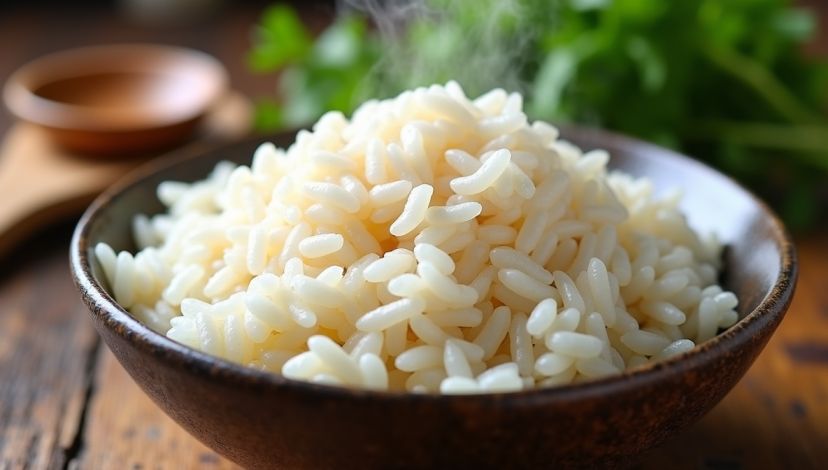People favor jasmine rice as a type of long-grain rice because it has a delightful smell and a somewhat sticky quality. It is common in Southeast Asian foods, particularly the Thai food. The reason why people like eating jasmine rice is not only that it tastes good, but even that it could be an energy and nutrient supply. Understanding jasmine rice nutrition facts is important if you want to include it in your daily meals in a healthy way. The current article aims to describe the nutritional value of jasmine rice, its disadvantages, and the way it is different in comparison with other varieties of rice. This guide offers clear and straightforward information to help you make proper food choices, whether you focus on health or are simply curious.
Important Points Post Introduction
- Jasmine rice is rich in the carbohydrates as a source of energy.
- It also has vital vitamins and minerals such as B vitamins and magnesium.
- Jasmine rice is different in flavor and smell compared to other kinds of rice.
What Is Comprised In The Nutritional Value Of Jasmine Rice?
Jasmine rice contains predominant carbohydrates, which constitute approximately 80 percent of its weight during a cooked state. These carbohydrates give an individual with the energy required to run his or her day-to-day activities. Cooked jasmine rice ( 140 grams) or one cup has about 205 calories. Jasmine rice contains low levels of protein besides carbohydrates and very minimal levels of fat.
Jasmine rice contains approximately 4 grams of protein in every cup serving, and this aids in the repair and the growth of the muscles.It does not provide a lot of protein, but it still contributes to your daily requirements. The jasmine rice has little amounts of fat, less than 1 gram in total, and this therefore makes it a low-fat food.
Jasmine rice is also a source of vitamins, such as B vitamins B3 (A.K.A niacin), B1 (A.K.A thiamin), and B6 vitamins. These Vitamins play a great role in the conversion of food into energy and the functioning of the brain. Also, there are other minerals like magnesium, phosphorus, and manganese in minute doses. Magnesium assists in the process of muscle functioning, and phosphorus in maintaining strong bones.
This is a breakdown table comparing the nutritional content of 1 cup of cooked jasmine rice to other types of rice variety:
| Nutrient | Jasmine Rice (1 cup) | Brown Rice (1 cup) | Basmati Rice (1 cup) |
|---|---|---|---|
| Calories | 205 | 215 | 190 |
| Carbohydrates (g) | 45 | 45 | 42 |
| Protein (g) | 4 | 5 | 4 |
| Fat (g) | 0.4 | 1.8 | 0.5 |
| Fiber (g) | 0.6 | 3.5 | 0.7 |
| Magnesium (mg) | 19 | 84 | 28 |
The nutritional values change according to the cooking procedure and brand of rice.
In what ways are Jasmine rice better or worse nutritionally than the other kinds of rice?
Comparing jasmine rice nutrition facts with other types like brown rice or basmati rice shows some differences. People often believe that brown rice offers more benefits because it contains the whole grain with the bran and germ layers.It offers more fiber, vitamins, and minerals than jasmine rice, which usually comes polished and white.
For example, brown rice has about 3.5 grams of fiber per cup, while jasmine rice has only 0.6 grams.Fiber assists consumption and keeps cholesterols at healthy values. Nevertheless, jasmine rice is more digestive and less firm, thus some people like it.
Basmati rice resembles jasmine rice, only that basmati rice is likely to be lower in the glycemic index (GI). Lower GI translates that it increases the blood sugar level gradually, a fact that is good in managing diabetes. Jasmine rice is in the moderate to high range of GI, so anyone concerned with blood sugar intake should eat its in moderate portions.
The table below is a comparison table between glycemic index and fiber content of various rice types:
| Rice Type | Glycemic Index (GI) | Fiber (g per cup) |
|---|---|---|
| Jasmine Rice | 68-80 (Moderate-High) | 0.6 |
| Brown Rice | 50-55 (Low) | 3.5 |
| Basmati Rice | 50-58 (Low-Moderate) | 0.7 |
Note: Individuals with issues of blood sugar must be careful of the quantity of jasmine rice they consume.
What Do the Health Benefits Of Eating Jasmine Rice Consist Of?
Jasmine rice has a number of health benefits because of the nutrients found in it. To begin with, jasmine rice is a great source of instant energy due to its high concentration of carbohydrates. This is why athletes or anyone needing an instant energy boost after a workout find it the perfect food to use.
Second, jasmine rice does not contain gluten and is therefore safe to patients with celiac disease or gluten sensitivity. This is to enable more people to take rice foods without fear of health complications that are related to gluten.
Thirdly, jasmine rice contains antioxidants like selenium and traces of zinc that help strengthen the immune system and protect the body against free radicals. Selenium plays a role in thyroid function as well as metabolism.
Nevertheless, jasmine rice contains minimal fiber, so it is best to combine it with vegetables, legumes, or proteins to balance meals and support intestinal flora. Consumed as an alternative food with other foods, jasmine rice can aid healthy nutrition and well-being.
Is Jasmine Rice suitable in a weight loss diet?
Many people wonder if jasmine rice nutrition facts fit within a weight loss plan. You can include jasmine rice in a healthy weight management diet as long as you consume it in limited quantities. It gives you energy and pleasure, avoiding overeating nutritionally low snacks.
The trick of consuming jasmine rice when reducing weight is limiting the rice portion and balancing meals. For example, you can combine jasmine rice with lean protein sources and plenty of vegetables to create meals that are both nutrient-rich and lower in calories. One should not overcook food with a lot of oil or high-calorie sauce.
Other reports indicate that whole grains such as brown rice might help to lose weight better because they have increased fiber, which makes one feel satiated. However, you can still enjoy jasmine rice occasionally, especially when you add it to other nutritious foods.
Finally, to sum it up, you can include jasmine rice in weight-reduction diets, but it shouldn’t be the only carb source, and you should keep the amount consumed in check.
Jasmine Rice: How to cook it to get as Much Nutrition and flavor as possible?
Jasmine rice might have many nutritional components; however, it is important to cook it right so that all of them do not go to waste. Jasmine rice is usually prepared by first rinsing the grains with cold water to get rid of excess starch that will make it clumpy. Next, add water to rice at a ratio of around 1.5:1 or 2:1 relying on the desired result.
Cooking jasmine rice by boiling in little fats or salt ensures that the calorie content is minimum and the nutritiveness is not compromised. Another convenient way that will guarantee uniform cooking involves the use of a rice cooker. Some individuals prefer to toast jasmine rice with a small amount of oil prior to cooking to include warmth to it.
Jasmine rice should not have its jasmine rice overcooked because this may cause the loss of nutrients, as well as developing the mushy texture which is undesirable. When finished cooking the rice, it tastes better when fluffed with a fork.
Cooked jasmine rice tip: Put cooked rice in the refrigerator at all times unless the rice will be consumed within the open hours, to avoid the development of the bacteria.
Conclusion
Jasmine rice nutrition facts reveal that it is a good source of carbohydrates, providing energy with some vitamins and minerals. Even though jasmine rice contains less fiber than brown rice, it has an aromatic flavor and smooth consistency that most people adore. It can be included in a balanced diet provided it is taken in moderation and combined with other health-giving foods. Jasmine rice is of a significant value in most culinary arts, whether it concerns energy, gluten-free diets, or just good food. Careful process and conscious consumption of this raw rice will assist you to receive the best out of it.
FAQ’s
Q1: Does jasmine rice contain more health value as compared to white rice?
A1: Jasmine rice is a White rice that is unique in its aroma and texture. It is nutritionally equivalent to other types of white rice, but it does not contain as much fiber as brown rice.
Q2: What is the number of calories contained ina serving of jasmine rice?
A2: A single serving of cooked jasmine rice contains approximately 205 calories, with the majority coming in as carbohydrate.
Q3: Does jasmine rice increase blood sugar levels fast?
A3: Jasmine rice hasa medium to high glycemic index; that is why it may increase the level of blood sugar more quickly as compared to brown and basmati rice.
Q4. Does jasmine rice suit persons who are intolerant to gluten?
A4: Yes, jasmine rice is gluten-free rice and does not present any known health risks to individuals with gluten-intolerance or gluten sensitivity (sometimes labeled celiac disease).
Q5: How can jasmine rice be cooked?
A5: But before cooking, make sure to wash the rice first before using a water ratio of 1.5 to 2 times the amount of rice to cook nice and fluffy rice.













